
Snowflake Audit Trail
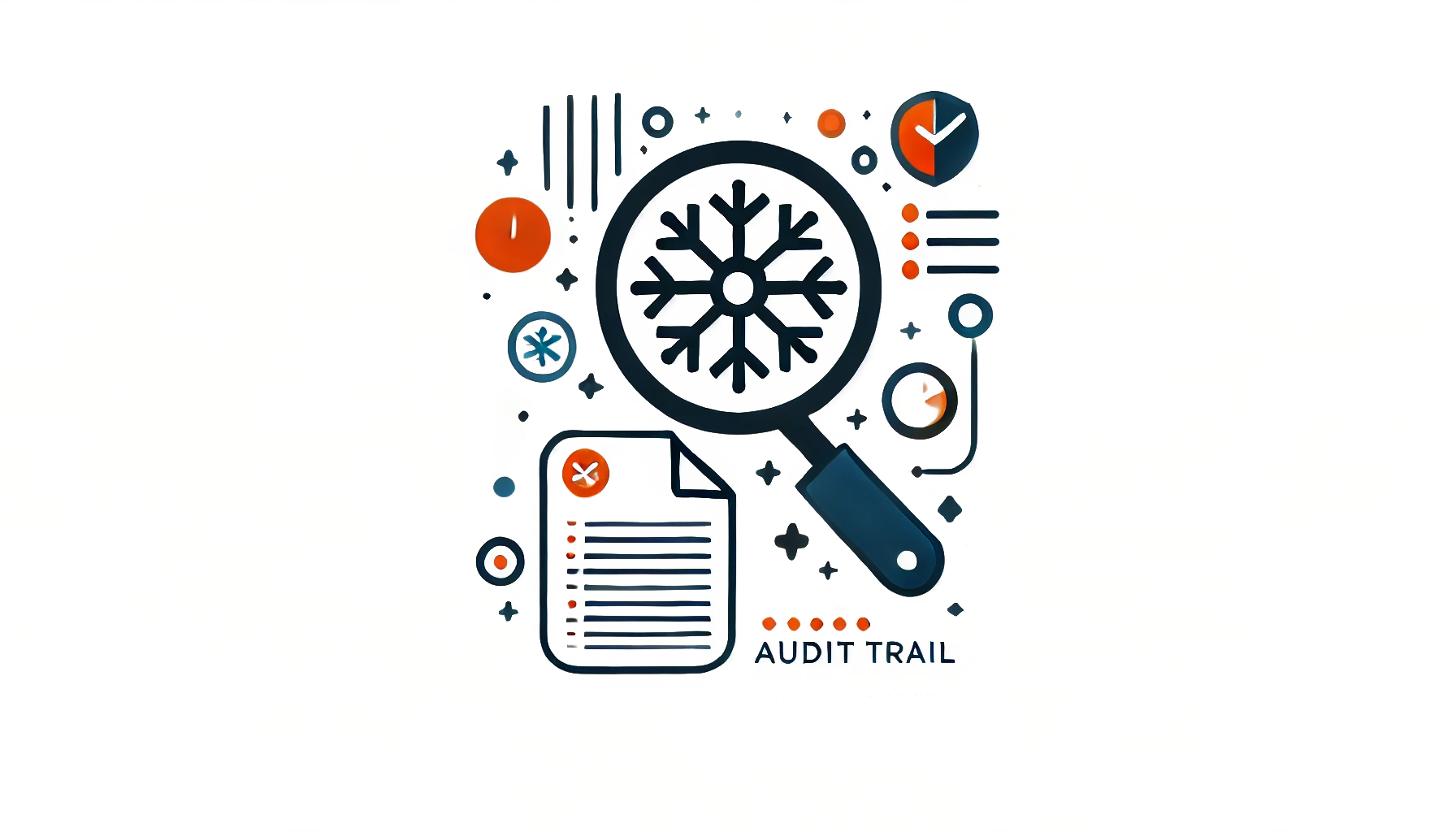
A comprehensive Snowflake audit trail system is essential for protecting your organization’s data warehouse security. According to ENISA’s Threat Landscape 2024, ransomware attacks increased by 128% in the past year, with 73% of these incidents involving unauthorized access to sensitive data. This alarming trend highlights why robust audit trails in data warehouses like Snowflake aren’t just a compliance checkbox – they’re a crucial defense line against modern cyber threats. As organizations store increasingly sensitive data in cloud platforms, understanding and implementing proper audit trails has become more critical than ever.
What is an Audit Trail for Snowflake?
An audit trail for Snowflake is a mechanism that logs every interaction with the database. It tracks who accessed the data, what data was accessed, and what operations were performed. This is crucial for ensuring compliance with data protection regulations such as GDPR, HIPAA, and PCI-DSS. Audit trails also provide visibility into any unauthorized access or data manipulation.
Snowflake provides a comprehensive set of native audit trail capabilities that allow users to track historical data access, modify database objects, and monitor changes made to sensitive information. These capabilities are essential for managing risks and ensuring transparency.
Native Audit Capabilities in Snowflake
Snowflake provides built-in audit features that help track data access, modifications, and user activities. These capabilities are essential for maintaining data governance and compliance requirements.
The platform offers several ways to implement audit trails:
-- Enable account usage tracking USE ROLE ACCOUNTADMIN; GRANT IMPORTED PRIVILEGES ON DATABASE snowflake TO ROLE analyst;
Python for Native Audit Trail in Snowflake
Python is widely used for interacting with Snowflake and managing audit trails programmatically. By using the Snowflake Python Connector, you can connect to your Snowflake database, perform data manipulations, and maintain an audit trail of all actions performed.
Here’s an example of how to use Python to connect to a Snowflake database, retrieve data, and maintain an audit trail:
Connecting to Snowflake Using Python
import snowflake.connector # Establishing the connection conn = snowflake.connector.connect( user='<your_user>', password='<your_password>', account='<your_account>', warehouse='<your_warehouse>', database='<your_database>', schema='<your_schema>' ) # Creating a cursor object cur = conn.cursor()
Retrieving Data and Maintaining Audit Trails
You can then retrieve data and log the actions in an audit trail table. Here’s how you might do it:
# Querying the data
cur.execute("SELECT * FROM users")
data = cur.fetchall()
# Logging the action in the audit trail table
cur.execute("""
INSERT INTO audit_trail (user_id, action, timestamp)
VALUES (%s, %s, CURRENT_TIMESTAMP)
""", (user_id, 'SELECT',))
# Commit the changes
conn.commit()This Python example shows how to retrieve data from the “users” table and log the query action into an “audit_trail” table.
Creating a Copy of the Data for Auditing
To maintain a historical record of sensitive data, you can create a copy of the data each time it is accessed. Here’s an example of how to create a copy of the data:
# Creating a copy of the data for audit purposes
cur.execute("CREATE TABLE users_copy AS SELECT * FROM users")This ensures that you have an immutable record of the original data that can be referenced if needed.
Enhanced Auditing with DataSunrise
While Snowflake’s native capabilities are robust, DataSunrise offers additional features for comprehensive audit trail management. Here’s how to view audit trails in DataSunrise:
- Set up your Snowflake Instance in DataSunrise
- Create an audit rule
- Proceed to the “Transaction Trails” section. Here you can view your audit trails based on the created audit rules
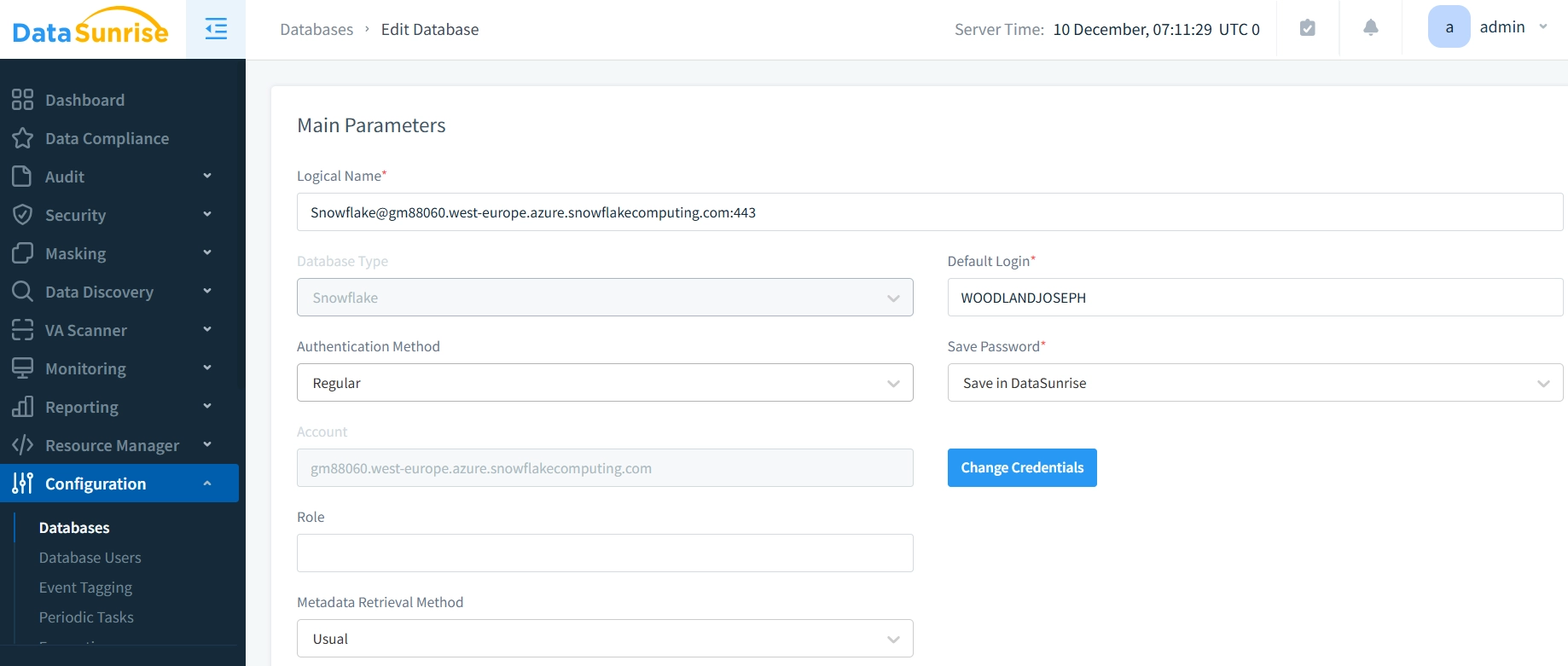
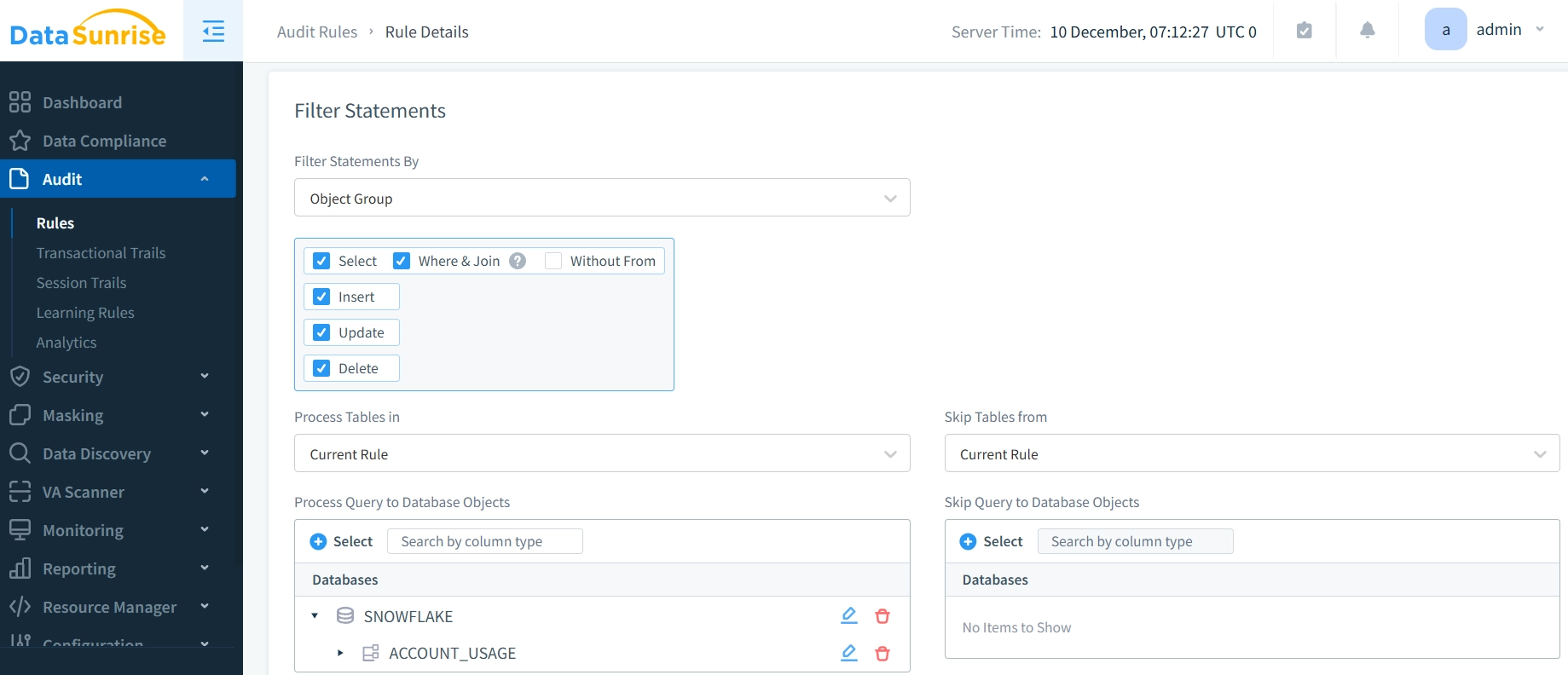
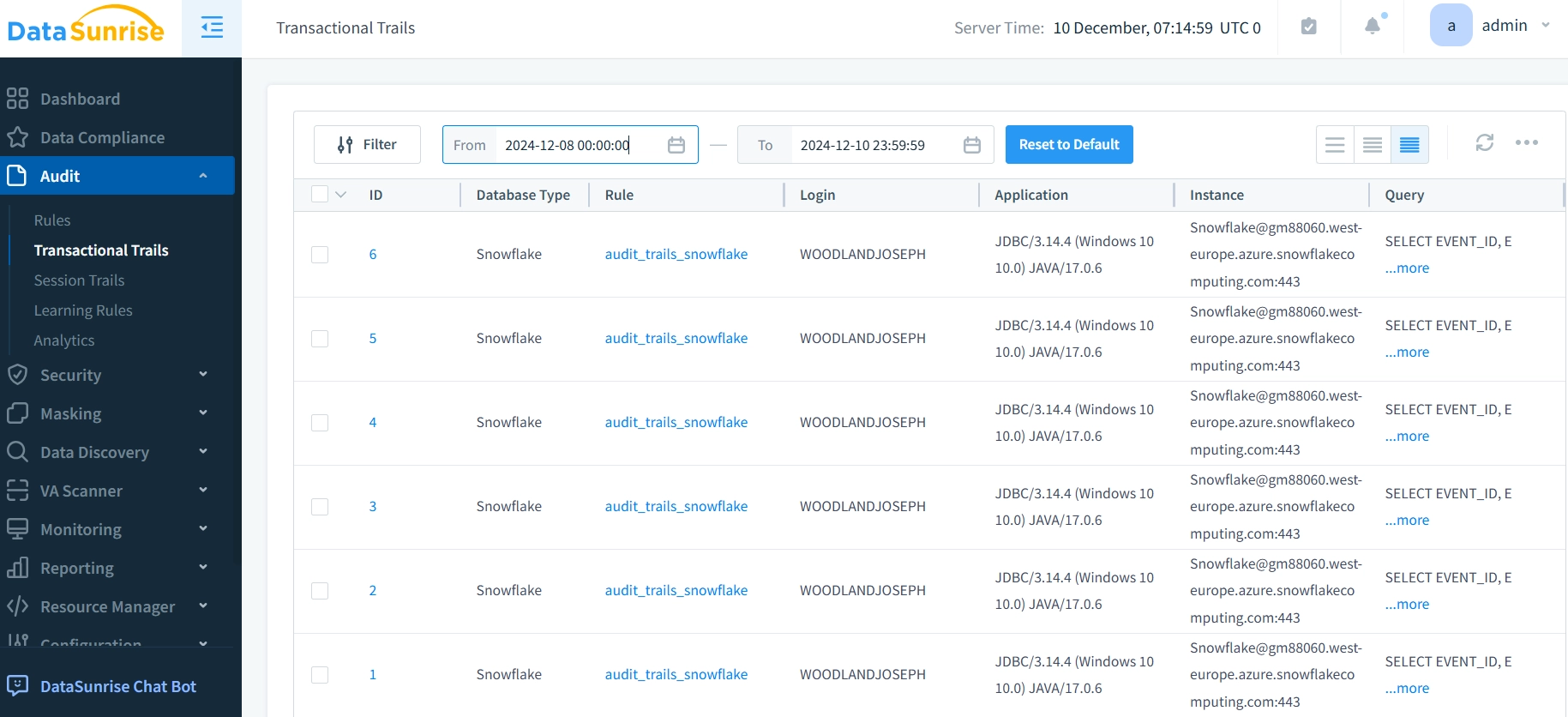
DataSunrise provides:
- Centralized audit management
- Real-time monitoring
- Customizable audit rules
- Compliance reporting
- Integration with existing security tools
Meeting Compliance Requirements with DataSunrise
DataSunrise simplifies audit processes by automating compliance reporting and monitoring tasks, drastically minimizing the manual effort required compared to traditional log analysis. You can configure Security Standards and other compliance settings in the “Data Compliance” section.
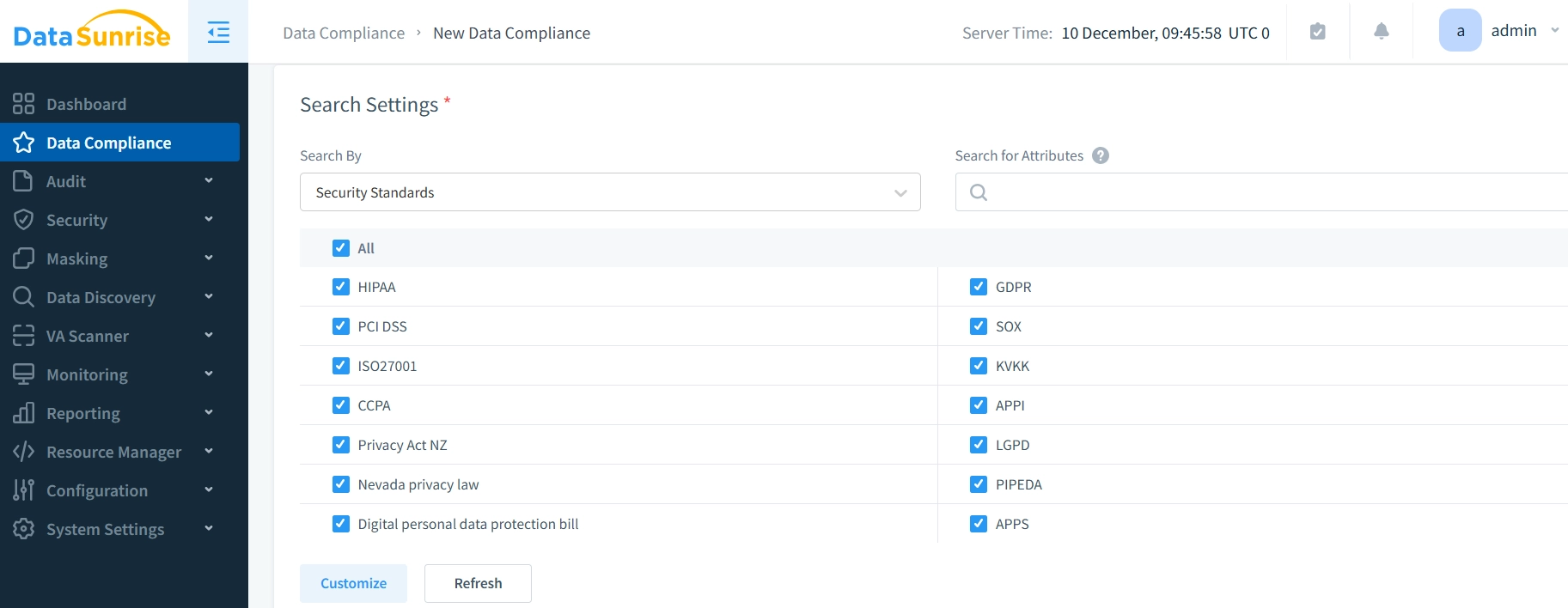
Best Practices for Audit Trail Management
- Regular Monitoring and Review
- Data Retention Strategies
- Automated Alert Systems
- Documentation Requirements
- Third-Party Solution Integration
Effective audit trail management starts with consistent monitoring practices. Organizations should establish a routine for reviewing audit logs, looking for unusual patterns or potential security breaches. This proactive approach helps identify issues before they become serious problems.
Data retention stands as another crucial aspect of audit management. Companies need clear policies defining how long to keep audit data and when to archive or delete older records. These policies should align with industry regulations and compliance requirements while considering storage costs and performance impact.
Security teams should implement automated monitoring systems that can detect and alert on suspicious activities. These alerts should be configured based on specific triggers, such as multiple failed login attempts or unusual data access patterns, enabling quick responses to potential security threats.
Documentation plays a vital role in maintaining audit trails effectively. Teams should maintain detailed records of all audit configurations, including any changes to monitoring rules and alert thresholds. This documentation ensures consistency across different environments and helps with troubleshooting.
Organizations should consider using third-party solutions like DataSunrise to enhance their audit capabilities. These specialized tools provide more sophisticated monitoring features, centralized management, and advanced reporting capabilities that complement Snowflake’s native functionality. Third-party solutions can significantly streamline compliance reporting and provide additional security layers through specialized monitoring rules.
Conclusion
As organizations face increasing cybersecurity challenges, implementing robust audit trails becomes crucial for data security and compliance. Snowflake’s native capabilities provide a strong foundation for audit trail management, offering essential features like data masking, SQL-based tracking, and Python integration. However, the complexity of modern data environments often requires a multi-layered approach.
Organizations can strengthen their audit capabilities by combining Snowflake’s built-in features with specialized third-party solutions. DataSunrise, for instance, offers enhanced security features and centralized audit management that complement Snowflake’s native functionality. Our security suite provides comprehensive database security and audit compliance tools, seamlessly integrating with Snowflake to enhance your data protection strategy.
The key to successful audit trail implementation lies in choosing the right combination of tools and consistently following best practices. Whether you’re using native features, third-party solutions, or both, regular monitoring, proper documentation, and automated alerts form the cornerstone of effective audit trail management.
Ready to enhance your Snowflake audit capabilities? Visit DataSunrise’s website to schedule an online demo and discover how to strengthen your data security posture with advanced audit trail features.
